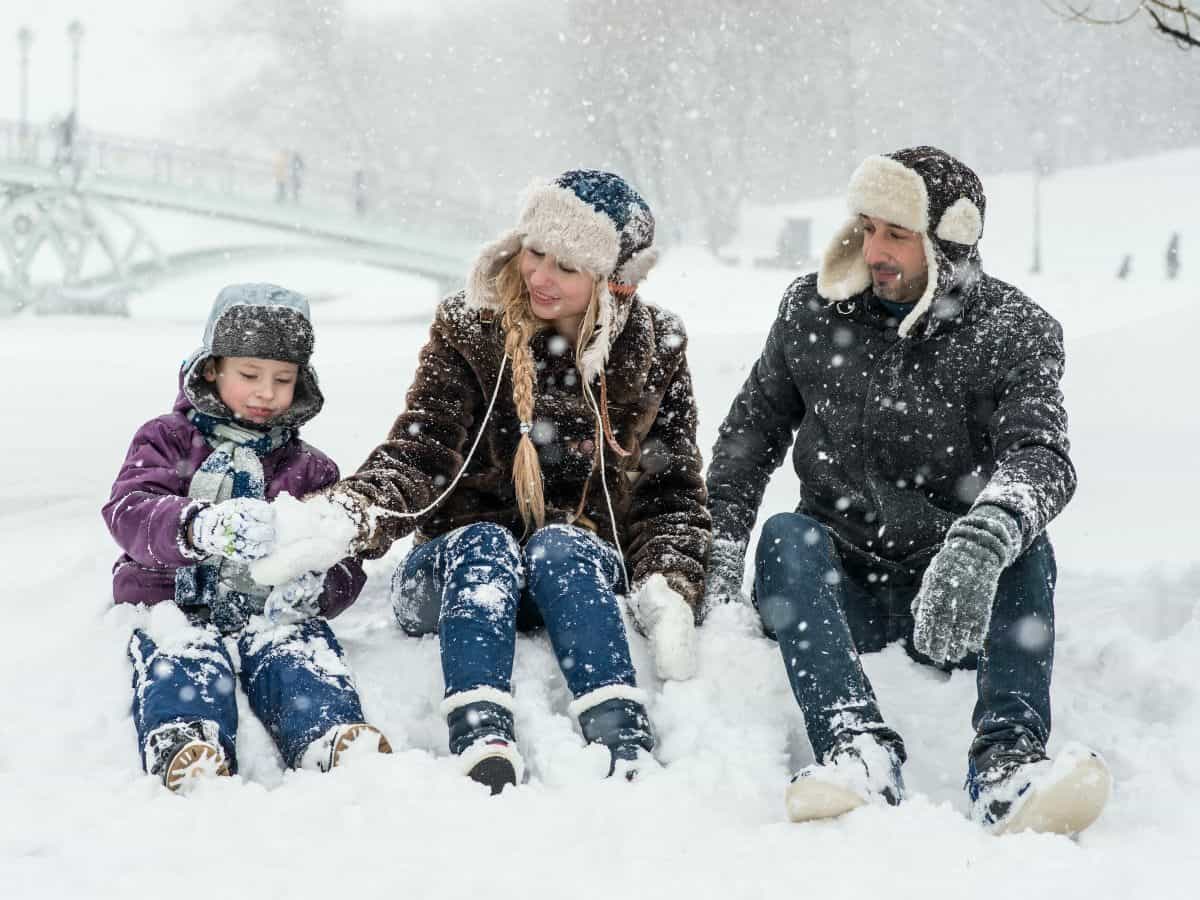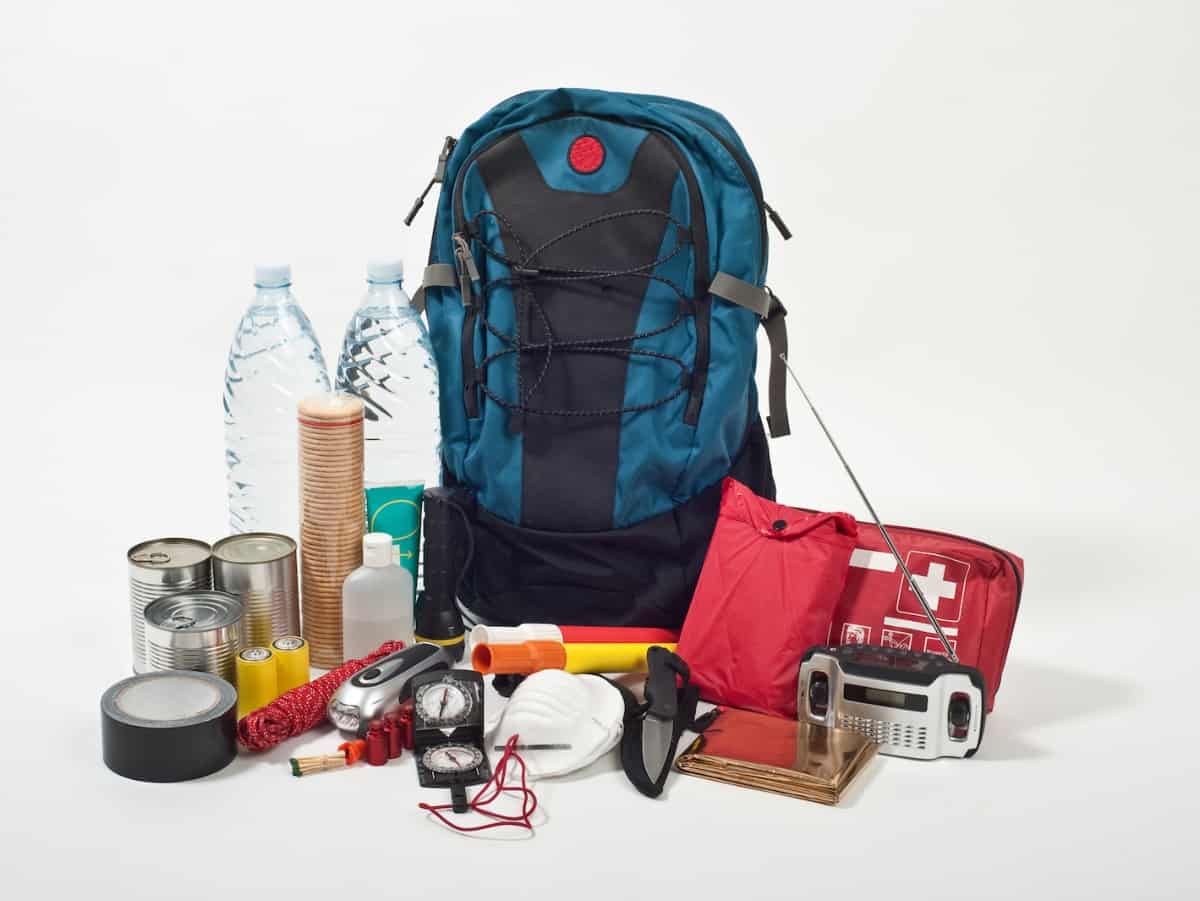Are you prepared in the event of an emergency? Having an emergency bag is one way of getting prepared. You take it with you if you suddenly have to leave your home. Having an emergency go-bag checklist is a list of items that you carry in the kit bag. It is a portable kit checklist to help you survive away from home. It can be a daunting task putting a bag kit checklist together. The checklist of tools you’d like to put together in an emergency is always longer than what you can carry with you. You will have to make tough choices about what to pack.
What Items To Have In an Emergency Go Bag
The following is a checklist of items to include in an emergency go-bag:
- Food cans and bottled water
- The first-aid kit consisting of bandages, gloves, hand sanitizer, pain reliever, and ice packs
- Sturdy shoes or boots
- Personal hygiene items
- Prescription medication
- Blanket
- Pocket knife
- Flashlight
- Items for special care needs of kids, people with disabilities, seniors, etc.
- Portable radio battery operated
- Emergency phone numbers
- Pens, paper, and tape for writing messages
- Whistle and pepper spray
- Identification documentation
Be prepared for a variety of potential emergencies with a survival plan. It should account for scenarios where you and your family may need to move away from home to secure your safety. By organizing an emergency go-bag checklist, you avail all the important tools and equipment needed to keep you going in the event disaster strikes.
Begin by collecting the basics of an emergency go-bag checklist. The items should be quality products to ensure they don’t fail you in your times of need. Some of the tools have overlapping uses. Ensure you have plan B or C when preparing to light up a fire, erect a shelter against the rain, or charge a lantern.

Essentials of Emergency Go Bag Checklist
No matter the emergency or season, the following are essentials to put together to get you started:
Food
First, our mental and physical performance deteriorates quickly without food. You need to keep up with the body’s calorie needs or else you risk going into a devastating state of starvation. As a result, fatigue and poor decision-making fall into effect.
Arrange in your emergency go bag some lightweight, freeze-dried foods, including snacks rich in calories. Look for foods that consist of a ‘full meal’ in a small bar. Although most of them don’t taste that good, sample for the test you like best.
Since foodstuff eventually expires, have a collection of fresh stuff. Go for packages that allow adding boiling water directly to avoid the need of having to carry around extra bowls or cups for mixing.
- Healthy canned food
- Shelf-stable foods
- Rich nutritional energy bars
- Boxed ready-to-eat meals
- Portable stove
- A multifunctional tool consisting of a can opener, knife, etc
- Spork multi-utensil

Water
Water is key to survival. It is a must-have in an emergency go-bag checklist. Have a pack of water bottles in your bag kit. The amount to carry depends on weight and surrounding climate conditions. Stock up enough volume that it will last at least three days.
Do not forget a water filter as it would allow you to refill bottles from any source of water available. So, you won’t have to depend on tap water as it may turn out to be scarce. One option for a filter is water purification tablets. Of course, you need to account for family members and friends, but don’t forget pets too if you have one.
There is the risk of breakage in your emergency go bag. Therefore, store water bottles inside a sealed rigid container, such as a single-walled metal container. Carry an extra container to filter water as you may come across a rare source.
- Water bottles for everyone
- A portable water filtration unit
- Water purification tablets
- Single-walled metallic container
- Collapsible water bladder
- Stainless steel bowl
Comfort and Warmth
Clothing contributes immensely to keeping yourself comfortable and warm. A worthwhile investment is proper, high-quality clothing, as it has a longer lifespan and is more comfortable. Environmental conditions will determine the level of warmth and comfort you need, so it’s best to consider the change in seasons. For example, in summer you won’t need to carry with you a heavy winter coat.
Invest in acquiring clothing from a sports store and eliminating underperforming garments like khaki and denim. Sports outdoor clothing is lightweight, designed to be on the move, takes up less space, has special designs on the knees, retains heat, drys out quickly, and can be easily washed by hand.
Even if the climate is hot, always carry with you long-sleeve tops and pants for extra protection. Or you can opt for convertible pants that allow zipping to shorts and tops allowing holding and rolling up of the sleeves. Take into consideration that hot environments can be very cold at night.
Socks
Foot care is a critical part of surviving away from home. Wearing quality socks will take care of your feet outdoors. Include in an emergency go bag checklist at least more than a pair.

Gloves
Gloves provide both warmth and protection. Wear them when clearing debris or splitting up wood. At least wear two sets of gloves in a cold climate—one thinner that can fit inside the second, for enough warmth. Carry in your emergency go bag two pairs of durable gloves.
You don’t have to be choosy; even cold weather gloves serve well in the summer. Your hands won’t contribute much to overheating.
Gloves don’t displace much extra space and don’t add much weight. Preferred are leather palmed gloves to protect your hands from more than just the cold, including hot cooking pans, broken glass, blisters that come from working your hands with tools, splintered firewood, etc.
Gloves are very important in protecting your hands, lest they get injured, making you less able to take care of yourself.
Waterproof Jacket
It helps in protecting regular clothes against wet, messy tasks like working in wet conditions and cleaning game meat.
Hat
Are you aware that the head loses heat faster than the rest of the body? That’s why it is important to include a hat and a windproof beanie in the emergency go bag. You can wear them together or separately, depending on the current environmental conditions, which can be sunny, cold, or both.
Boots
Get waterproof tactical boots for hiking, preventing all sorts of foot problems including blisters.
- Hand warmers
- Ground pad
- Sleeping bag
- Canvas
- Clothes
- Lightweight jacket yet warm
- Socks
- Boots

Shelter
The shelter provides comfort against harsh environmental conditions, including bad weather. That’s why you should get a survival blanket in your emergency go bag. Don’t forget it when going through the list of items in your checklist. It is trickier arranging shelter in a bag kit because of various factors to consider, including terrain, the weather, weight, configurations, and bulk. But you won’t do without it because you need to protect yourself against harsh environmental elements and maintain core temperature.
A tent hammock is a plus. It won’t add too much weight to the bag. Large families or groups should look for large group shelters such as a survival tent. The shelter can be what you sleep on, in, and under. The bare essentials to help with sheltering include a collection of clothing, a tarp, and fire makers. With those, you can even find comfort in rudimentary shelters. You just need to have a cover to retain body heat.
A tarp should be a part of the shelter checklist. It comes in handy sealing a room for heat efficiency, hiding supplies, and it can act as a medical stretch. Upgrading from the bare essentials are a sleeping bag, sleeping pad, earplugs, and eye mask. Earplugs and eye masks are helpful when held up in an area with people snoring, talking, or under bright lights.
Sleeping on the ground is very cold. So, it’s helpful to insulate the contact between body and ground. A sleeping pad brings a huge difference in comfort. You can choose between a camping quilt, sleeping bag, or a bivvy. Acquire the lightest, most compact version right for your environmental conditions. Add a sleeping bag liner to enhance comfort in colder climates. For a more complete shelter configuration, add an ultralight tent.
Why Have a Tent?
A tent is an ultimate shelter for comfort as it protects you from predators and bugs and cuts off the rain and wind as well. Furthermore, it is easy to set up and in varied scenarios compared to a tarp, saving you exposure, calories, and time.
- Lightweight tent
- Tarp
- Waterproof blanket
- Rain poncho
- Hand warmers
Lighting
Ensure you have a suitable light source in your bag kit. A headlamp is the preferred source of lighting because it can be hanged around other items or worn on the head to leave you hands-free. It is lightweight and small in size, producing lots of light longer. Choose a headlamp that is USB-rechargeable or battery-powered.
Have backup power sources. This includes handheld flashlight, solar-powered radio, one or two lighters, lantern, and a cell phone. A lantern is very convenient because of its small size, can be collapsed to a very portable size, is rechargeable, and is better for spreading light around.
- Headlamp
- Flashlight
- Solar radio
- Portable solar charger
- Cell phone
Communication
Finally, a cell phone is critical for communication and entertainment. It stores your info, can act as a backup flashlight, is integrated with useful tools like a compass, map, and takes pictures. It is not necessary to keep the phone in an emergency go bag because it is within easy reach of your body.
Even without a sim card and an action plan, the 911 service is available for emergency communication. If the grid is down, get an amateur radio to the rescue.
- Cell phone
- Two-way walkie talkie
- Compass
- Whistle
- Watch
Store items in a compartmentalized emergency go bag. It helps in finding more quickly what you are looking for. Include with the bag kit; packing sacks, dry bags, and Ziploc bags.




